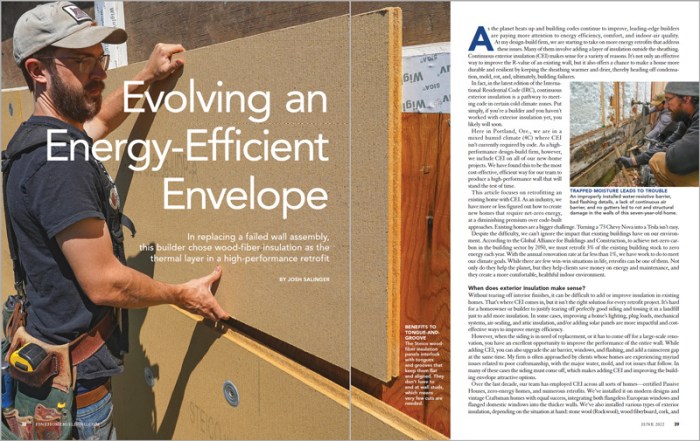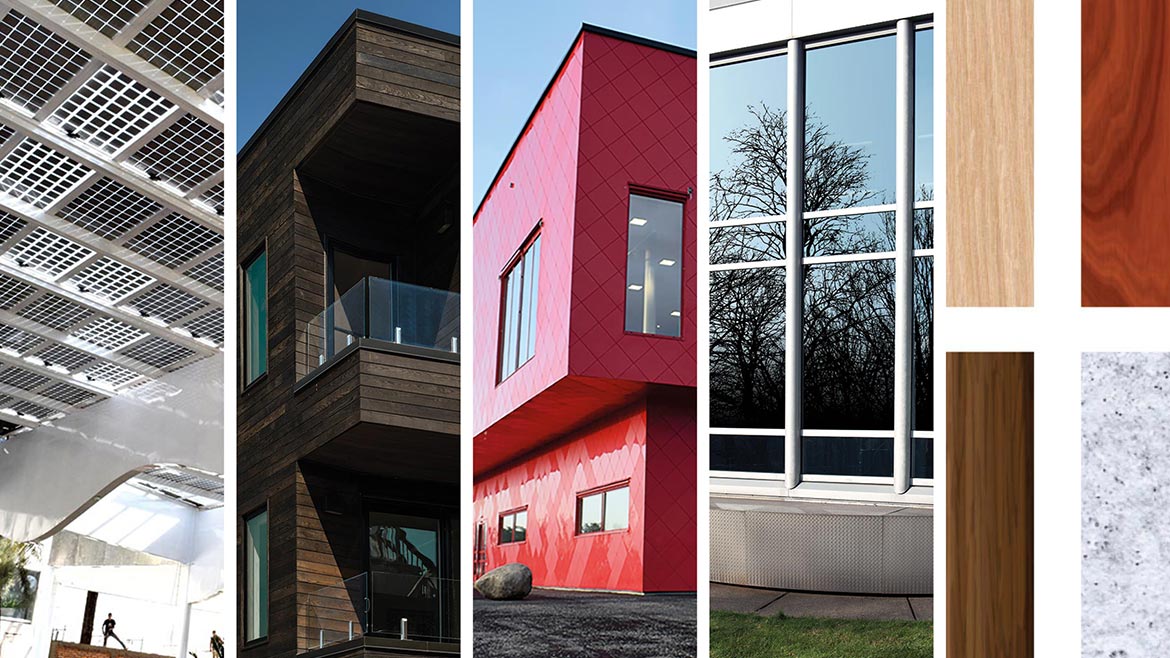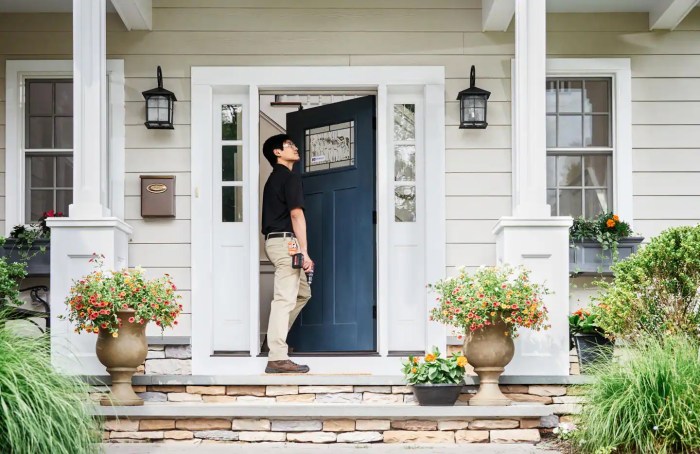Fine Homebuilding Envelope Product Reviews: The Ultimate Guide
Delve into the world of Fine Homebuilding Envelope Product Reviews, where every detail matters in the realm of construction. From choosing the right products to optimizing building performance, this guide offers a comprehensive look at what sets these reviews apart.
Exploring the nuances of envelope products and how they shape the foundation of construction projects, this guide is a must-read for anyone seeking expert insights in the field.
Overview of Fine Homebuilding Envelope Product Reviews

Envelope products play a crucial role in building construction by providing a barrier against elements such as water, air, and moisture. These products help improve energy efficiency, indoor comfort, and overall durability of a structure.
Reviews of envelope products are essential for builders and homeowners to make informed decisions when selecting the right materials for their construction projects. Fine Homebuilding's product reviews offer valuable insights into the performance, quality, and suitability of various envelope products available in the market.
Popular Envelope Products Reviewed by Fine Homebuilding
- Tyvek HomeWrap: A widely used weather barrier that helps prevent water and air infiltration, while allowing moisture vapor to escape.
- Spray Foam Insulation: An effective insulation material that provides a seamless air barrier and high R-value, improving energy efficiency.
- Foam Board Insulation: Rigid foam panels that offer thermal resistance and moisture protection, ideal for insulating walls, roofs, and foundations.
Types of Envelope Products
When it comes to envelope products for building construction, there are several types available in the market, each with unique features and benefits. These products play a crucial role in providing insulation, acting as air barriers, and preventing moisture infiltration.
Insulation Products
Insulation products are designed to regulate the temperature inside a building by minimizing heat transfer. They help in reducing energy consumption and maintaining a comfortable indoor environment.
- Fiberglass Insulation: Made from fine glass fibers, this type of insulation is cost-effective and widely used for its thermal performance.
- Spray Foam Insulation: Provides a seamless air barrier and high R-value, making it an efficient choice for insulating various building components.
- Cellulose Insulation: Environmentally friendly and composed of recycled materials, cellulose insulation offers good thermal performance and soundproofing qualities.
Air Barrier Products
Air barrier products are essential for preventing air leakage through the building envelope, improving energy efficiency, and reducing heating and cooling costs.
- Air-Sealing Tape: Used to seal joints and seams in the building envelope, air-sealing tape helps in creating a continuous air barrier to minimize drafts and energy loss.
- Spray-Applied Membranes: These products form a seamless barrier against air infiltration, providing a durable and long-lasting solution for improving building envelope performance.
Moisture Barrier Products
Moisture barrier products are designed to protect the building envelope from water infiltration, preventing damage to structural components and potential mold growth.
- Housewrap: Installed on the exterior walls, housewrap acts as a moisture barrier, allowing vapor to escape while preventing liquid water from penetrating the building envelope.
- Fluid-Applied Membranes: These products offer a waterproof coating that protects the building envelope from water intrusion, enhancing durability and longevity.
Criteria for Evaluating Envelope Products

When evaluating envelope products, several key criteria play a crucial role in determining their effectiveness in enhancing the performance of a building's envelope. These criteria include energy efficiency, durability, ease of installation, and overall cost-effectiveness.
Energy Efficiency
- Products with high R-values provide better insulation, reducing heat loss and improving energy efficiency.
- Airtight products prevent air leakage, minimizing energy wastage and enhancing overall thermal performance.
- Low-E coatings on windows and doors help regulate heat transfer, contributing to energy savings.
Durability
- Products made from quality materials withstand harsh weather conditions and maintain their performance over time.
- Resistance to moisture, UV exposure, and other environmental factors ensures long-term durability.
- Proper installation and maintenance can further enhance the durability of envelope products.
Ease of Installation
- Products that are easy to install can save time and labor costs during construction or renovation projects.
- Clear installation instructions and compatibility with existing building components contribute to ease of installation.
- Pre-fabricated or modular envelope products simplify the installation process and ensure consistency in performance.
Installation Best Practices
When it comes to installing envelope products, following best practices is crucial to ensure optimal performance and longevity of the building. Proper installation not only enhances the effectiveness of the products but also prevents future issues that may arise. Let's delve into some key best practices and common mistakes to avoid during installation.
Proper Surface Preparation
- Thoroughly clean and dry the surface before installing any envelope product to ensure proper adhesion.
- Remove any debris, dust, or old sealants that can hinder the effectiveness of the new product.
- Inspect the surface for any damages or irregularities that need to be addressed before installation.
Correct Application Techniques
- Follow the manufacturer's guidelines and instructions for proper installation techniques.
- Use the recommended tools and equipment to ensure accurate placement and secure attachment of the products.
- Properly seal all joints, edges, and seams to prevent air or water infiltration.
Avoiding Common Mistakes
- Avoid rushing through the installation process; take the time to do it right the first time.
- Do not overlook proper insulation and ventilation requirements during installation.
- Avoid overstretching or compressing the envelope products, as it can lead to performance issues.
Innovative Techniques and Tools
- Explore new tools such as laser levels or advanced adhesive applicators to streamline the installation process.
- Consider using prefabricated panels or systems for envelope products to ensure precise and efficient installation.
- Stay updated on the latest industry developments and innovations to incorporate new techniques for improved installation practices.
User Experiences and Testimonials

When it comes to Fine Homebuilding's reviewed envelope products, user experiences and testimonials play a crucial role in understanding the real-world performance and durability of these products. This feedback not only provides valuable insights into the effectiveness of the products but also helps in assessing overall satisfaction levels among users.
Performance Feedback
- Users have consistently praised the envelope products for their superior performance in maintaining thermal insulation and moisture control within homes.
- Many have noted a significant improvement in energy efficiency and comfort levels after installing these products in their homes.
- Feedback regarding the ease of installation and compatibility with existing structures has also been positive, highlighting the user-friendly nature of these products.
Durability Assessment
- Users have reported long-lasting durability with Fine Homebuilding's envelope products, with many stating that they have seen no signs of wear or deterioration even after years of use.
- The robust construction and high-quality materials used in these products have been commended for their ability to withstand harsh weather conditions and external elements.
- Feedback on the longevity of these products indicates that they offer a reliable solution for maintaining the integrity of home envelopes over time.
Overall Satisfaction
- Overall, user testimonials reflect a high level of satisfaction with Fine Homebuilding's envelope products, with many users expressing their intention to recommend these products to others.
- The positive feedback on performance, durability, and ease of use has contributed to building a strong reputation for these products within the home construction industry.
- Users' experiences and testimonials have played a crucial role in enhancing the credibility of product reviews, as they provide real-world validation of the claims made by manufacturers and reviewers.
Closing Notes
In conclusion, Fine Homebuilding Envelope Product Reviews stand as a beacon of knowledge in the construction industry. With a focus on user experiences, installation best practices, and product evaluations, this guide equips you with the tools to make informed decisions for your next project.
Popular Questions
What is the purpose of envelope products in building construction?
Envelope products serve as crucial components in maintaining a building's structural integrity by providing insulation, air barriers, and moisture barriers.
How do user experiences influence the credibility of product reviews?
User experiences offer real-world insights into the performance, durability, and overall satisfaction with reviewed products, enhancing the credibility of the reviews.
What are the key criteria used in evaluating envelope products?
Key criteria include energy efficiency, durability, and ease of installation, which significantly impact a building's overall performance.




